We arrived in Kraków late in the evening after a few hours in a bus from town of Zakopane after a few memorable days of hiking in the Tatra mountains. Getting used to the extreme beauty of nature and then heading into the city can be a tough transition, even when that city is an attractive, cultured, historical place like Kraków.
No matter. Kraków (population 750,000) was ready for us, and for the multitude of other tourists and travelers too. The city center is rife with hostels, hotels and eateries, and there are enough museums and tourist attractions to consume all the time allotted to them.
On top of that, nearby Auschwitz-Birkenau execution camp makes for a critical day trip that should be the first thing on your list – even if you only have one to two days in the area.
We had four days in Kraków (including one day for Auschwitz) and found it suitable for a taste, but not a deep connection. As a result, this post is not an overview of what you should do in Kraków – it’s just what we did. Pace yourself here, and enjoy.
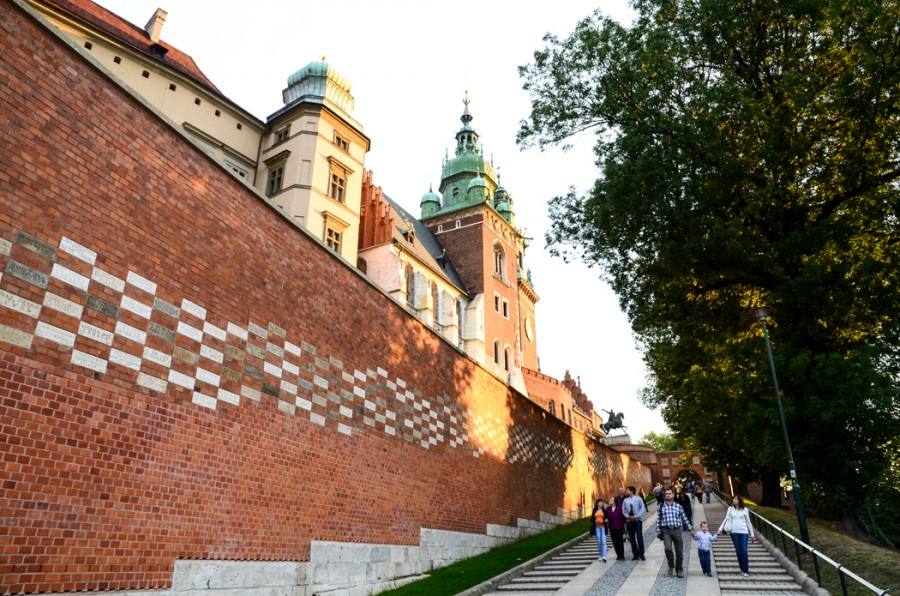
The entrance to Wawel Castle, a Krakow “must see” tourist destination according to the Lonely Planet. We didn’t set foot in the place, but provided that conventional warfare doesn’t break out in southern Poland anytime soon, the castle will be there next time I pass through, so no worries.

Church of Saints Peter and Paul. No, I didn’t go in. In towns like Kraków, you can expend your whole daily budget on church entry fees and see more or less nothing unless you’re quite devout. I’m not that dude, and I’d rather blow my whole budget on food like a good kid should.
Our first full day in Kraków was so grey and nasty that we opted for an indoor activity. Wieliczka Salt Mine was our underground, overrated, overpriced stop of the day. For 73 PLN (about $23.00 US) per person, you get a guided tour of about two hours.
The salt mine is a wildly popular tourist destination and tickets can sell out, so buy your tickets in advance if you choose to go. Most hotels and hostels will offer package tours with portal-to-portal transportation. Or, for a cheaper option, but tickets in the city center of Krakow and take a public bus both ways.
To get to Wieliczka, jump on public bus #304 from the city center and jump off the bus when all the other camera-toting non-Poles disembark. The ride should take something like 20 minutes.
Wieliczka Salt Mine has been a continually operated salt mine producing table salt since the 13th century and was a source of much of the Polish crown’s wealth until 1772.
The mine descents as deep as 327 meters below the earth’s surface and contains around 200 km of tunnels and 2040 caverns of varying sizes, including multiple chapels.
The tourist route covers a 3.5 km walk through a small percentage of the mine, ranging from 64 meters depth to 135 meters depth by the end of the tour. Over one million people tour the mine annually. The chapels can be rented for marriage ceremonies, and receptions are often held in nearby underground ballrooms. There’s a lot going on in the mine despite the fact that it’s basically just a non-functioning historical industrial site.
Our English language tour group of Wieliczka Salt Mine was large – around 30 people.
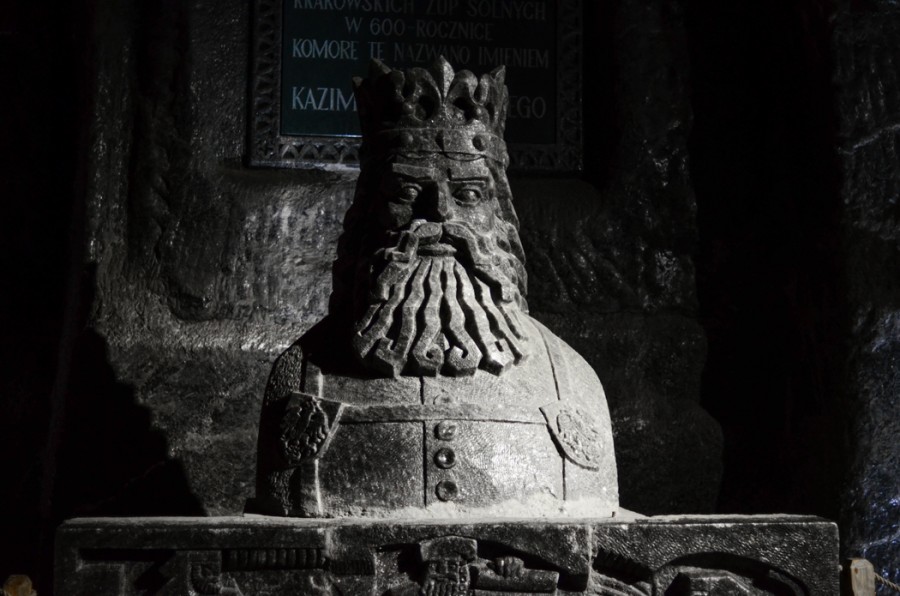
A salt statue of Casimir III the Great, Poland’s King from 1333-1370.
The highlight of the guided tour is the Chapel of St Kinga, a 35m x 15m (375 sq. meters) underground chapel carved completely out of salt, with intricate bas reliefs along the walls, chandeliers (made of salt), and textured floors (salt again). The majority of the chapel’s detail was was carved by self-taught miner/sculptors, one at a time, from 1896 to 1963. Kind of a ridiculous, insane undertaking. Good thing it turned out so nicely!
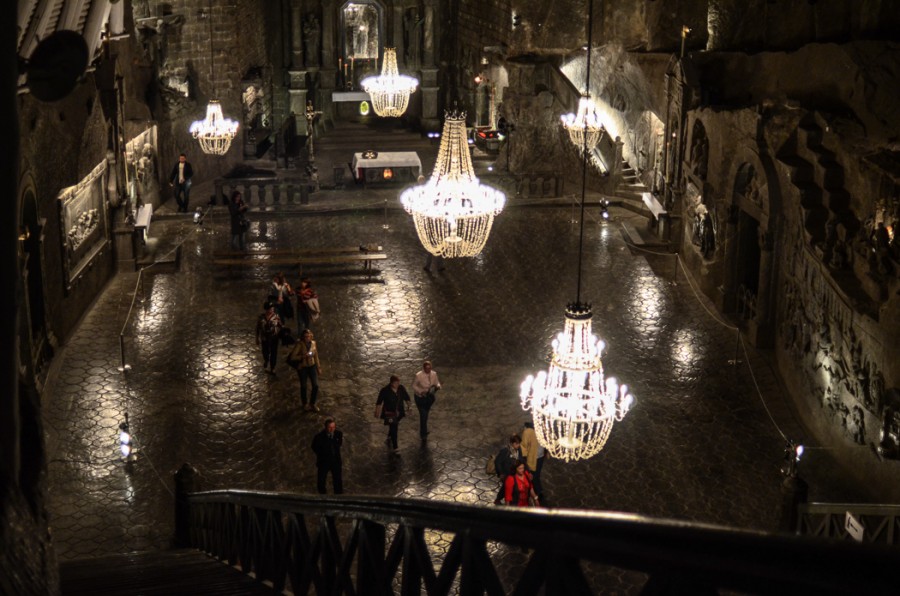
Chapel of St Kinga from above.
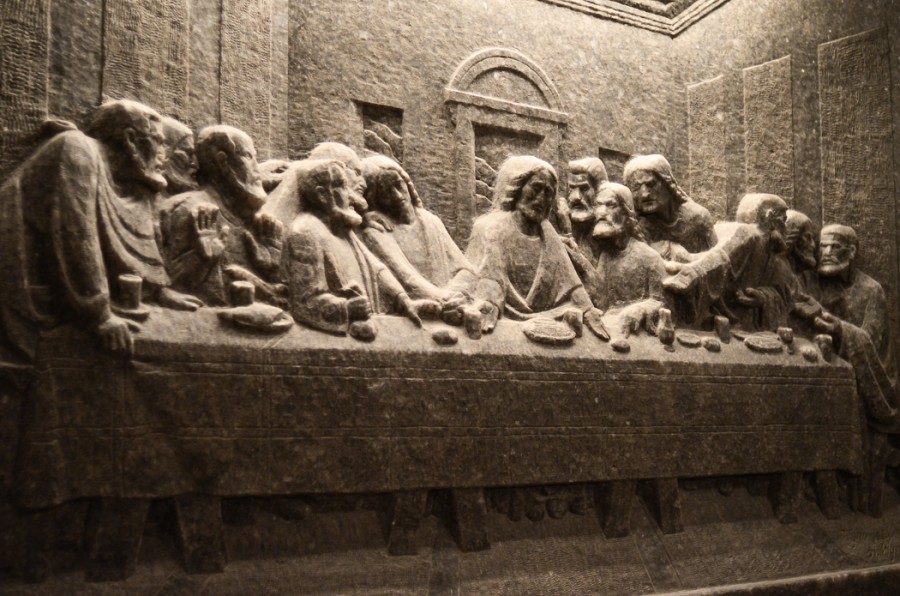
the last supper was inedible – TOO SALTY (GOOD ONE MATT).
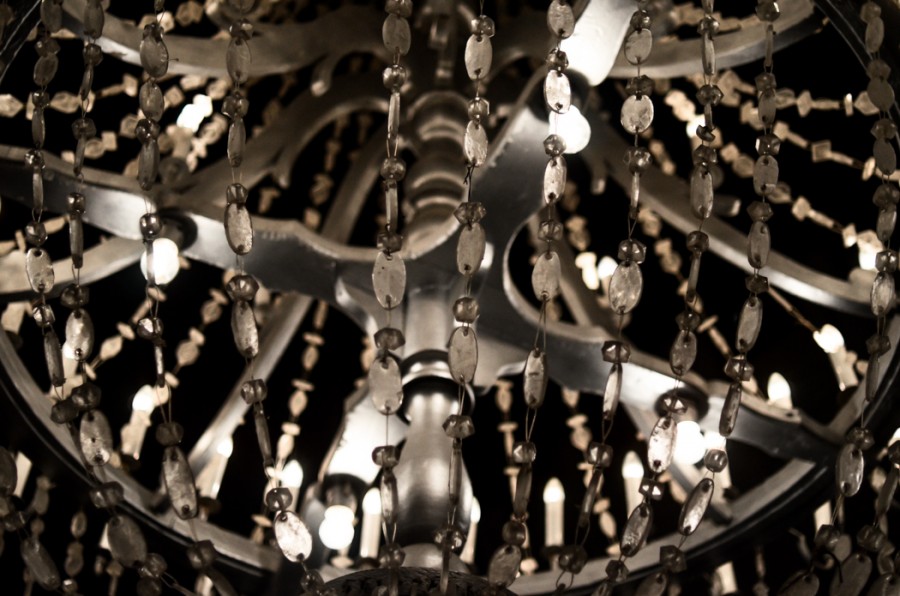
chandeliers made of salt crystals.
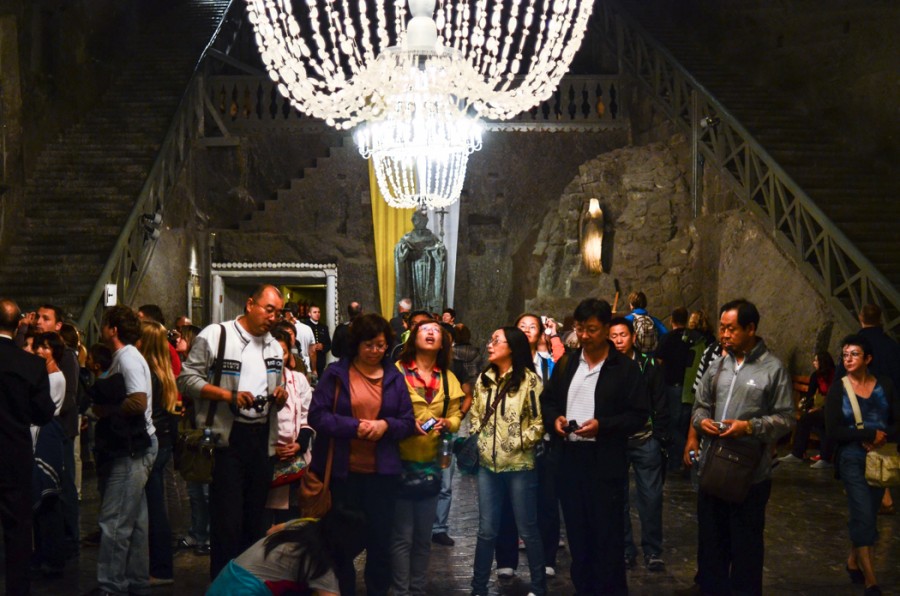
no shortage of tourists here.
It must have been a high-volume day in Wieliczka, because our tour guide allowed a total of about two minutes to explore and photograph the Chapel of St Kinga before it was time to move along like good little cattle. Not enough time to see the highlight of the tour, and the only church I actually wanted to visit in Poland? What?
More salty facts awaited us for the remainder of our time underground. We zoned out and waited for the end.
Admission to the salt mine had cost us about $50 US between the two of us, and more importantly, five hours of valuable time. Was it a waste? Yes and no. Yes, because yes. No, because I got to complain about it a lot on my travel blog.
I realize that Wieliczka Salt Mine is a UNESCO World Heritage Site and has captured the imaginations of many people, but not mine nor Cecilia’s. What I’ll remember: being slowly led around in dark underground tunnels while package tourists took horrible flash photos of impossible-to-photograph salt deposits. There’s little adventure to be had on the general tourist route.
Here’s one of the better attempts at photographing the tour that I came across during writing of this post.
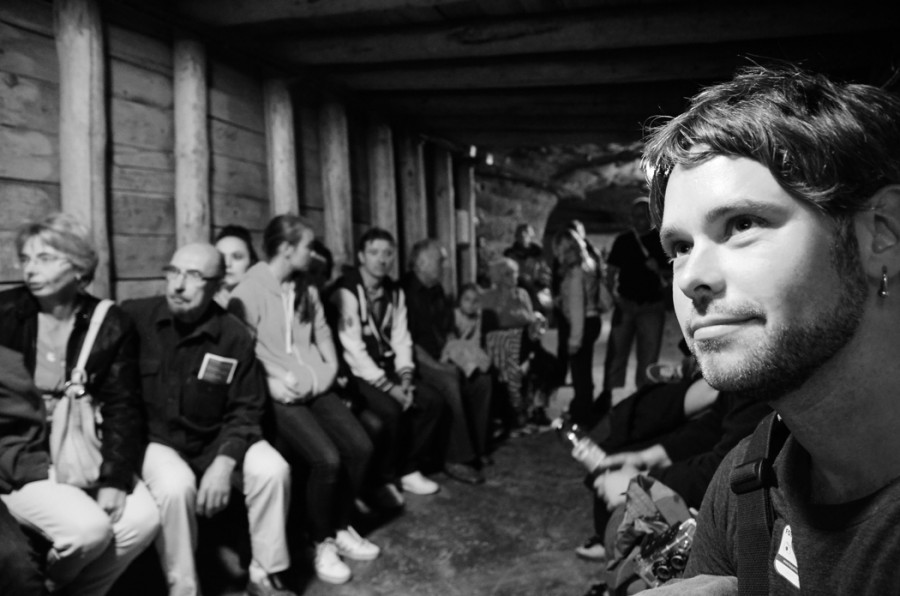
waiting for the elevator out of the salt mine, NEVER TO RETURN.
We made the salt mine even more forgettable by inundating its memory in Polish wódka that night.
Everywhere we had been thus far in our trip through Poland, Poles were ordering and drinking far more beer than vodka. But wasn’t this supposed to be one of the world’s great vodka producing/consuming countries? I was perplexed.
I think what I wanted was some sort of “and that was my Polish vodka experience” story, the way foreign tourists might want to encounter an “American cowboy” on their tour of the southwestern states.
I guess I really just wanted a friendly Pole to invite us to their event/party/table and make us take too many shots of vodka, sing incomprehensible songs, dance and talk too much. Is that too much to ask? This goes on, right?
A curious blog post that discusses vodka drinking in Poland in greater depth: “Drinking In Poland – The Truth”
The night we began shooting vodka was a Monday. Probably not the most likely night for a bang up night of drinking.
In the planning stage of our trip through the Baltics and Poland, we had more or less set aside a night for “Polish vodka night”. It was such an important touristic to-do that we were ready to set aside the following day as well.
Kraków knows about vodka seekers like us, and accordingly there is a multitude of bars that are ready to take your booze money – some more charming than others. We found a charming one.
We stopped into Ambasada Śledzia, aka the “Herring Embassy” for a snack and a drink in the late afternoon. It was just supposed to be for a snack and a drink, but the place was so
A shot of vodka was 4 PLN (about $1.50 US), a glass of beer was also 4 PLN. “Small” plates of Polish “tapas” were 8 PLN – things like herring in sour cream, white sausage, and pork knuckle. We split two plates for dinner (it was enough – Polish “tapas” is much bigger than its Spanish equivalent) and hit the bar for multiple rounds of vodka shots and beers to chase. Fun!

Ambasada Śledzia served only one type of vodka at the time of “research” – Żołądkowa Gorzka. It’s quite palatable and shooting it doesn’t require an iron will.
Ambasada Śledzia was empty when we arrived, and fully packed by the time we left that Monday night. This place is popular with locals and expats, and for good reason – it’s a welcoming space with friendly staff and fairly priced food and drink in a central location. An easy bet, and highly recommended.
And so there it was, our self-motivated “vodka experience”. Just a fun night of conversation and food in a cool little bar! The walk seemed back to our room seemed interminably long that night, probably because we weren’t walking in the straightest of lines.
The following day, we awoke with matching hangovers to an unsettlingly chilly August day. We put ourselves together just enough for a full day visit to Auschwitz-Birkenau extermination camp, which was unbelievably moving and interesting and well worth the visit even in bad weather and our temporary bad health.
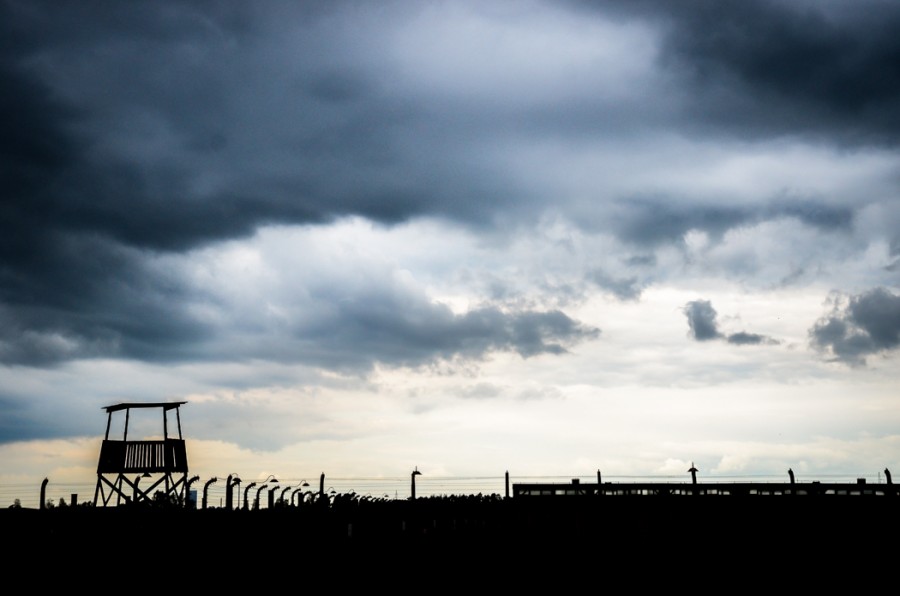
Auschwitz-Birkenau.
Don’t spent all of your time in the city center of Kraków. Head southeast to the nearby neighborhood and old Jewish quarter of Kazimierz early in your visit.
Prior to World War II, Kraków’s Jewish population was over 60,000 – about 25% of the city’s total population of 237,000. Most of said Jews lived in Kazimierz. Only about 6,000 of these Jews would survive the war.
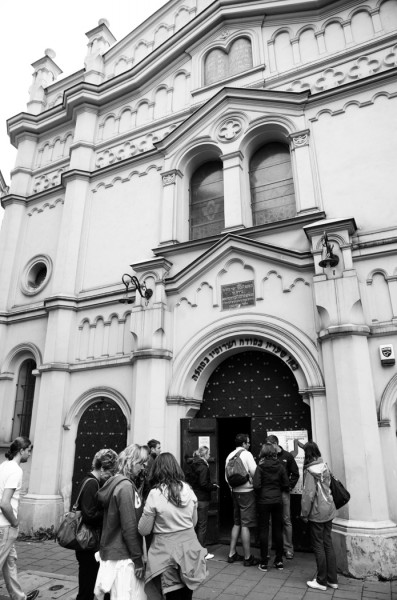
Several dozen synagogues stood in Kazimierz prior to Nazi occupation of Kraków. Most were destroyed, but seven synagogues survived. Tempel Synagogue pictured.
Kazimierz was not the site of the Jewish ghetto created by the Nazis – this was across the Vistula River in the Podgórze neighborhood.
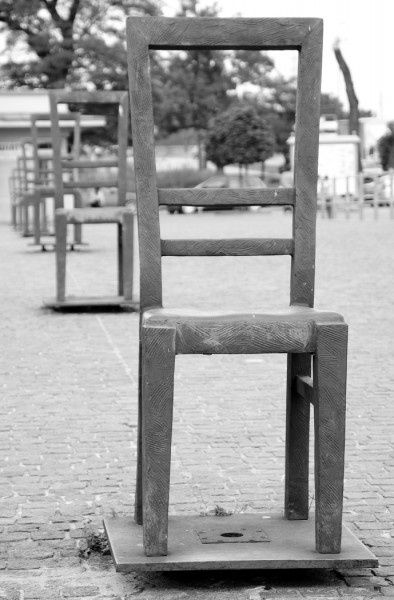
Plac Bohaterów Getta (Ghetto Heroes Square) memorial in Podgórze. It was here that Jews held in the Podgórze ghetto were loaded onto trains bound for concentration camps like Plaszow and Auschwitz-Birkenau. The 70 empty chairs represent the possessions left behind by deportees.
If you want to have a history-heavy day in Kazimierz, it’s within reach. If you don’t, don’t. This neighborhood has a lot of great restaurants, cafés, bars and boutiques, and locals doing their thing despite the tourists.
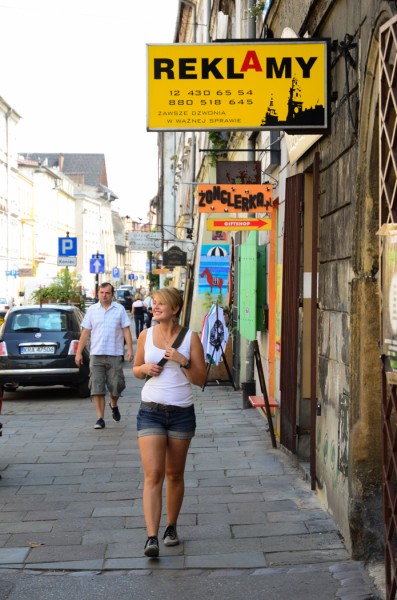
small shops in Kazimierz
We lazed an afternoon away drinking beers and people watching, meandered through local design/craft shops, snacked on Polish french bread pizza (zapiekanka) and capped things off with dinner at a great little French restaurant.
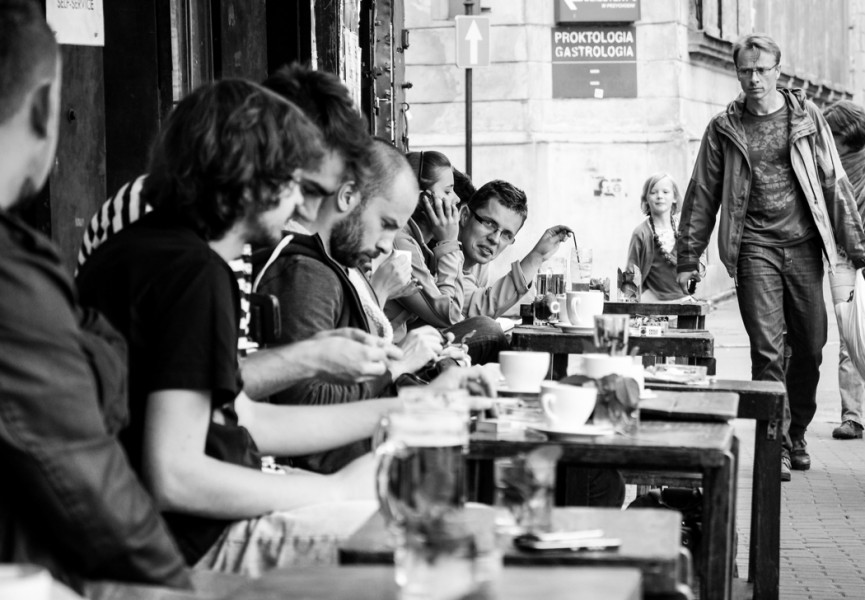
Outdoor seating on Plac Nowy in Kazimierz. Pretty eventful people-watching here.
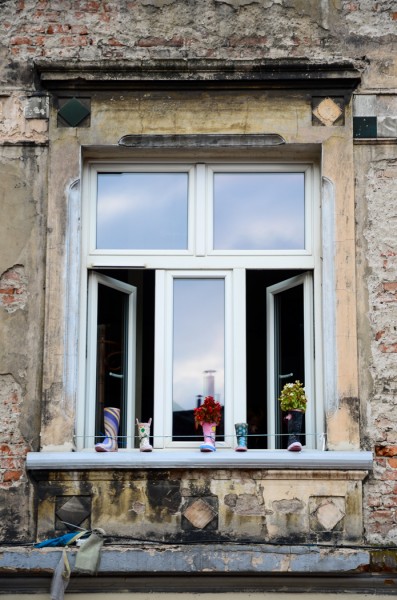
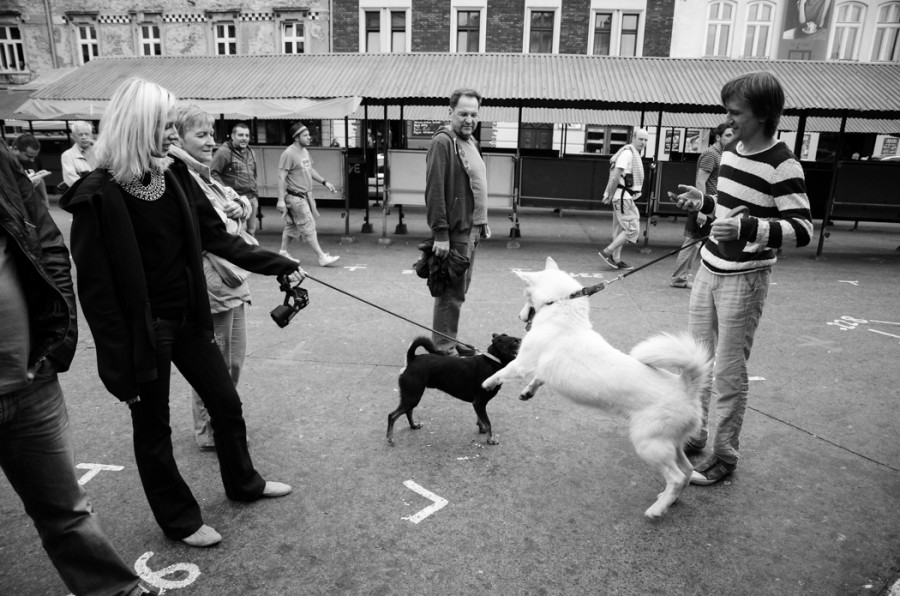
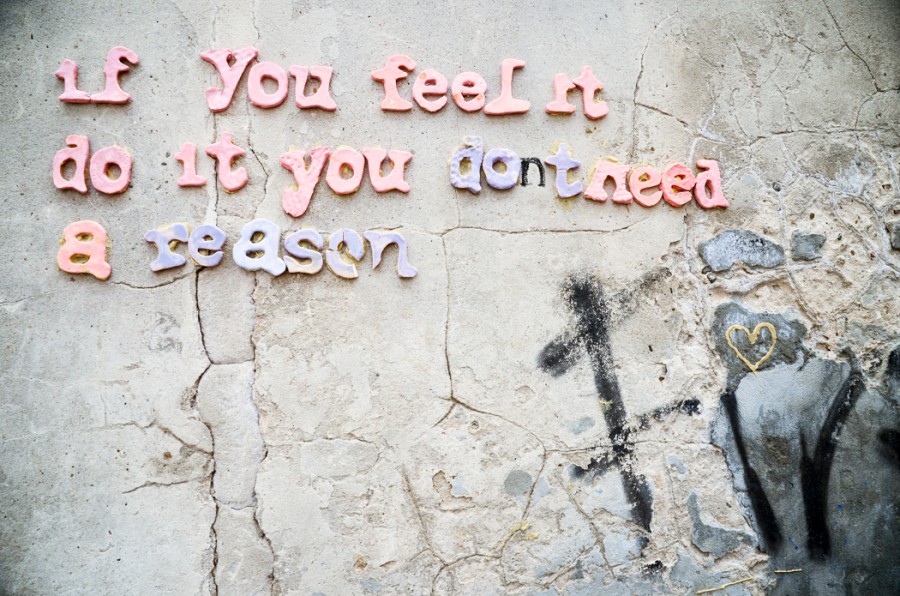
Plac Nowy is a great spot to start your day in Kazimierz.
The rotunda in the center of this square is one of the notable places in Kraków to try zapiekanka – basically French bread pizza done Polish-style. Usual ingredients are a half baguette topped with mushrooms and cheese, and possibly meat at your direction. Throw some KETCHUP on top (yes, really) and you’re pretty much there. I think we paid about 6 PLN for this one and split it. It’s a lot of food.
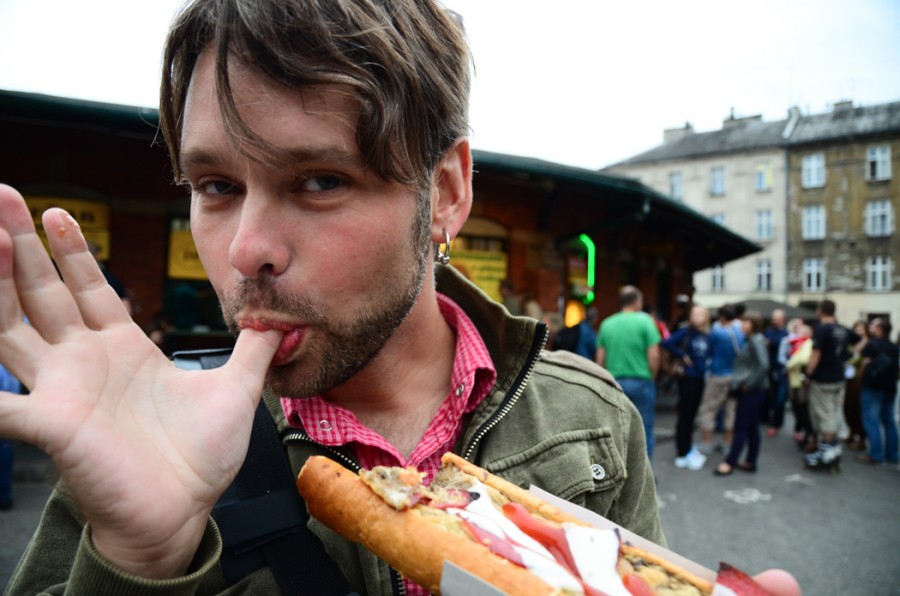
I don’t always eat zapienkanka (in fact, I don’t even like it and almost never eat it), but when I do, I get it with ketchup on top of it like a real Pole does.
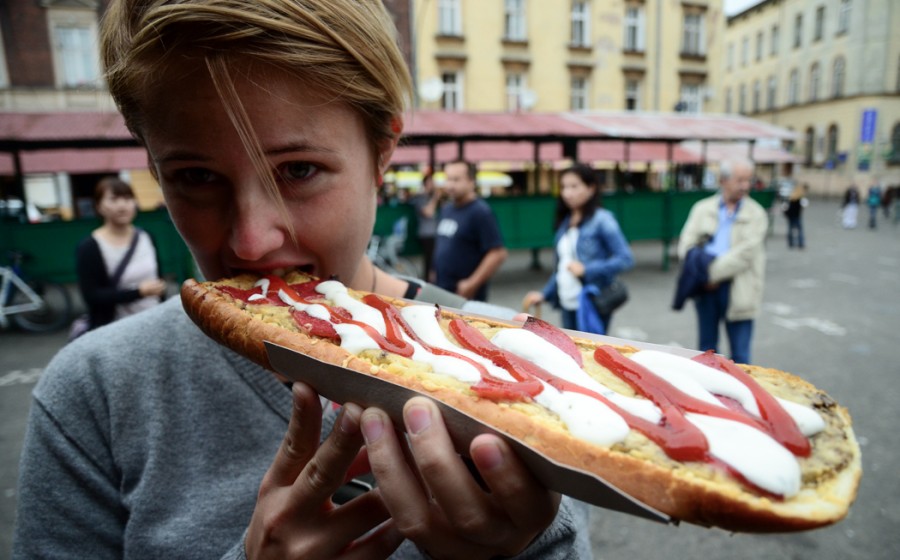
Cecilia loves zapiekanka so much that this was the last one she ever ate, ever.
Joking aside – if you visit Poland, you have to eat at least one zapiekanka – and that zapiekanka must be topped with ketchup, because that’s the way it’s done. I’m not saying you’re going to enjoy it. But you’ve gotta do it anyway, so you might as well try.
Our last night in Kraków was spent at Mundo Hostel, a nice property just east of the city center with a really fantastic breakfast, clean bathrooms, comfortable sleeping rooms and friendly staff. Can’t recommend this place enough. It’s solid.
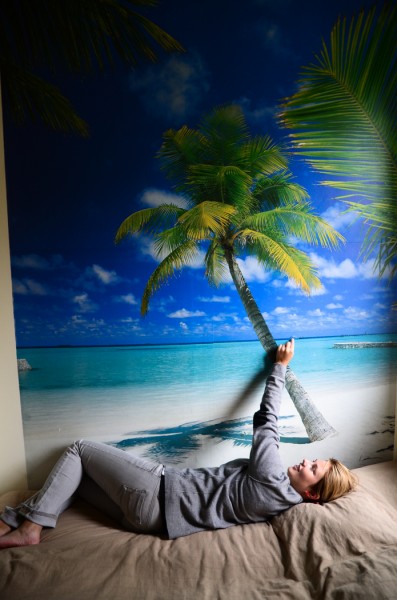
We had a little under a week left together in Poland and opted for a little beach time to make up for the cold grey days that Warsaw and Kraków had hit us with. We aimed for Hel Peninsula – one of Poland’s favorite domestic beach destinations.
We booked TLK train fares to Gdynia for onward transit to Hel.
We were in for one of the least comfortable overnight train rides I endured in 2012, including three months of train transit in India.
In retrospect, I think we could have probably asked for sleeper fares or couchettes, but our clerk didn’t offer this as an option, and I foolishly didn’t ask. As a result, we ended up in with 13 hours of sitting upright and trying to pass out before finally arriving in Gdynia.
Stepping into our 8-seat carriage was like stepping into someone’s just-worn gym shorts – our carriage had zero ventilation. It was hot and sticky, and due to the 4-6 people attempting to sleep in our small sweat box, there was nowhere to put your legs, or your head, or anything. I don’t remember falling asleep, and I certainly don’t remember staying asleep for long.
Was going to the beach even going to be worth this rough night? This train ride was hell. But I suppose it wasn’t all that strange – Cecilia and I started this trip together in HEL. For the next leg of our trip, we would burn in Hel (voluntarily).


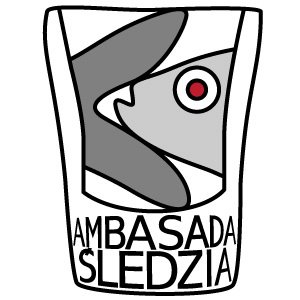
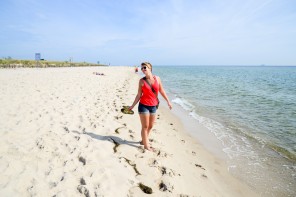
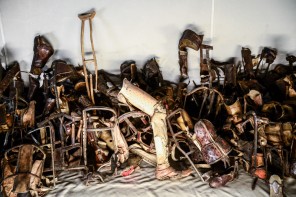

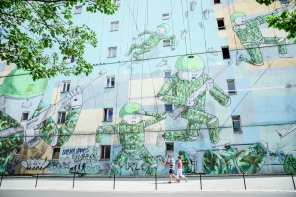
Great post! I still might do the Salt Mine since I’ve never been there, but I really appreciate your honesty about what you liked and what you didn’t. Glad you at least liked the Zapiekanka.
Thanks for visiting. Looking back, I still think the salt mine was a comparative waste of time and money to be honest – I would have much rather spent that time independently exploring Auschwitz-Birkenau or hiking more in the Tatras. Just my perspective.
Hi there! Thanks for the link.
Oh…you hated the salt mine too? Last year I came across this ad, somewhere in KRK- ‘ Celebrate New Year’s Eve in Wieliczka’. Yeah, a realization of my greatest fantasy…=)
You never said it but I feel you- All those people coming to Krakow in search of amazingness, they are, oftentimes, dissapointed. The churches, the castle…All that jazz. The streets covered with sadness.
Great read. I shoud’ve said it at the beginning!
p.s. The Robin Williams/Lech Walesa’s photo in your Gdansk post. HA =)
Ha, I think I’d rather spend NYE in jail than (PAY!) to sit in the salt mine. It’d make a way better story.
I really believe that expectations are the problem with some tourists/travelers – they come to city XYZ (Krakow, for example) with an idea that some sort of magic will occur while they chase structured tourist activities. It’s a recipe for serious disappointment and confusion, not to mention huge wastes of time (this being the cardinal sin) and considerable rip offs. I mean, how amazing a time can one possibly have at Wawel Castle? No risk, no reward, in my opinion.
I’m trying to approach most things in life with less (less, but not LOWERED) expectations these days. It’s a great way to maintain control over one’s own happiness. I think this point got hammered into me earlier in 2012 when dealing with the myriad problems and frustrations of traveling in India for three months. I just had to adapt, and it made me a happier person in the end. It’s a great way to approach travel.
Oh, I didn’t even mention our visit to Krakow’s “Oskar Schindler’s Factory” museum because I found it so UNBELIEVABLY BORING that it didn’t even write up well at all, not even with considerable levels (normal levels) of complaining.
I think I hated the Warsaw Rising Museum (in Warsaw, of course) more, but Schindler’s Factory sucks almost equally. The information presented comes at you from all sides and is so disjointed that the only impression I was left with was “I DESPERATELY NEED BEER”. That said, I did get a pretty good picture of my now-ex-girlfriend with a whole bunch of swastikas there, so I guess I didn’t come away completely empty handed.
Thanks for checking my stuff out, I really appreciate it. If proper “WORK” doesn’t swallow me whole for April, I’ll soon be putting up some really great stuff on Mexico that rings my bell about as much as anything ever has. I think you’ll dig.
Take care!
Found this when I was searching for photographs on Poland. Went to Krakow and Warsaw last year in October!! Your travel blog full of great photos and insights… Come to Singapore one day!
Wow, thanks so much for the kind words! I would love to hit Singapore soon, hopefully as the beginning or end of a long island hopping trip through Indonesia (it’s one of many trips on the wish list)! And let me know if you’re looking for pics of Poland for any specific purpose – I shoot a lot more than I exhibit on the site. Thanks for reading!
Well done! I’ll remember to skip the salt mine!
If I’ve done nothing else positive for the world, I’ve saved my mom $20.00 US on salt mine admission. A life worth living.